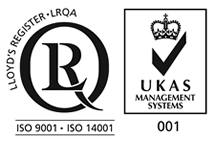
Main Products
Copyright 1998-2025 Firmetal Group All Rights Reserved. | Sitemap
Tantalum has good biocompatibility, no reaction with body fluids and no stimulation to body tissues. Studies have found that the main way for the body to remove tantalum from the human body is the phagocytosis reaction of macrophages. Experiments have proved that this reaction is slight and not enough to cause degeneration, necrosis or disintegration of phagocytes. Phagocytosis still survives 1h contact with tantalum dust without cell degeneration, and the cells are in good condition. This is contrary to the phenomenon of degeneration, necrosis and disintegration of alveolar macrophages caused by free silica dust entering the human body in silicosis patients under the same conditions, which confirms that tantalum has excellent cytocompatibility and no cytotoxicity. There are few reports on the cytotoxic effects of tantalum and porous tantalum on osteoblasts and mesenchymal stem cells. Tantalum has high surface energy and good wettability, after implantation in the body, biological tissue is easy to grow on its surface, and has high binding performance with natural bone, so it is called "biophilic metal".
The implant made of porous tantalum not only provides mechanical strength, but also reduces stress shielding, facilitates stress conduction, facilitates bone regeneration and shaping, and has excellent biocompatibility. It can enable bone tissue and blood vessels to grow into the implant, and is conducive to implant bone bonding as well as the transport of nutrients and metabolites. It has the advantages of excellent bone conductivity, promoting bone regeneration and low bacterial adhesion. Porous tantalum can provide structural support for bone tissue in line with physiological stress distribution and conduction without stress shielding, and its honeycomb three-dimensional structure can make bone grow in quickly and securely, thereby enhancing the revascularization of bone necrosis area and reducing bone transplantation and related complications.
Tantalum wire is used in orthopedics for tension-reducing suture of tendons, fascia, bone and even nerve fibers, as well as fixation of teeth in the oral cavity and tantalum wire ligation when fracture occurs. Xu et al. used tantalum wire ligation for internal fixation of 33 patients with various types of patellar fractures, and followed up for 5 months to 16 years after surgery, and found that only 2 cases had traumatic arthritis, and the remaining 31 cases had no complications. Good curative effect was obtained. Tantalum wire has high strength, large tension, stable fixation, low elasticity, good toughness, easy knotting, good biocompatibility, non-toxic and harmless to the human body, corrosion resistance and no need to take out again. Tantalum wire loop fixation is easy to operate, short time, less trauma, wide indications, and early postoperative activity to prevent joint stiffness and muscle atrophy.
Tantalum mesh Tantalum sheets can be used to repair, support and seal fractures and muscle or bone defects, with good early results. Tantalum stent implantation in the coronary artery of miniature pigs showed no rejection after 6 months of observation, which could reduce the probability of subacute thrombosis and vascular restenosis, and the vascular regeneration was satisfactory.